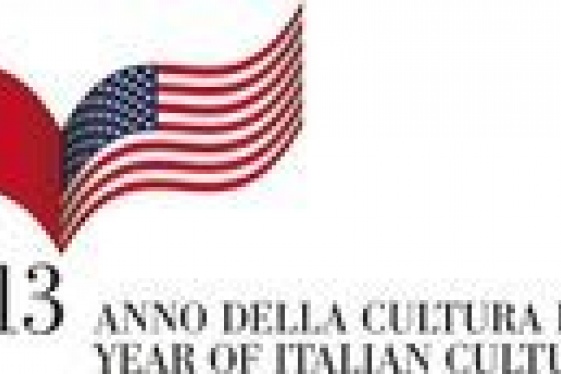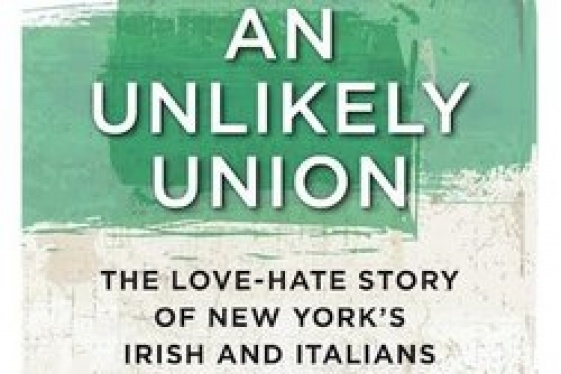
Lucio Caputo (President - Italian Wine and Food Institute)
40 anni di promozione dell'Italia negli USA: incontriamo Lucio Caputo

Guests of a few past interviews have been Italian American personalities, born in the U.S., who have shown great dedication, skill and passion in representing Americans of Italian descent. But this representation, this business of flying the relations between the two countries, it is not interpreted exclusively by Italian-Americans born in the United States.
One of the most important Italian American, was born in Italy - in Sicily, to be more precise - and then came to the U.S. in the first representation in our country and then on their own, with a career of great success, it is Lucio Caputo, historical Italian presence in New York.We meet on the eve of two important events organized by him in his capacity as Chairman of two major groups, the pillars of the Italian community in the USA.
Mr. Caputo, you have been leading for more than 30 years the Italian Wine & Food Institute, which you also founded. But your success in the promotion of the Italian wine goes back further than that. Please tell us something about this?
I founded the Italian Wine & Food Institute when I left ICE (the Italian Trade Commission) in 1983. During my mandate at the ICE New York office I started a great promotional campaign in favor of the Italian wines: a never before occurred, which began in 1974 and ended in 1982. Before the campaign in the United States Italy was exporting 362,000 hectoliters of wine a year, in 1983 the annual export reached 2,400,000 hectoliters, an increase of 563%: all the data are available on a table published on our website www.italianwineandfoodinstitute.com. The best Italian wines profited from this campaign, which allowed us to overcome French wines, first in quantity and then in value.
The good thing about this campaign, which was actually carried out as I had imagined, was that all ICE offices worked together for its success, with a coordinated strategy targeted to the business of the export of the product, even regarding the public and media relations, something that had not occurred in the past. I toured most of the United States, talking to a lot of media of any kind. We also opened the wine bar on the fifth floor of the ICE office, which at that time was at Park Avenue, where there was the continue possibility to taste different Italian wines and admire Italian art and culture.
In 1982, Italy decided to end the campaign: a famous political figure of that time even accused me of having turned ICE in a honky tonk. My mandate ended, the wine bar was dismantled - spending more than what had been spent to build it - and after the end of the campaign, from 1983 to 1991 the export of Italian wines to the United States fell by 71%, from 2,400,000 hectoliters of 1983 to 701,000 in 1991. Only in 2011 the number of hectoliters of Italian wine annually exported to the U.S. has surpassed the record of 1983.
As I left ICE, I started my own business and I decided to found the Italian Wine & Food Institute, a nonprofit organization that promotes quality Italian wine and food, using only the resources given us by of our supporters.
Your annual event in New York, the Gala Italia, will be held this year on February 20. Indeed, on February 20 there will be two Gala. Can you give us a preview of what will happen?
In 1984 I also started to organize the Gala Italia, which lasted - in the original formula - up to 1994: we had to stop it for budget reasons but also because somehow we had reached a level of such excellence that it would be impossible to surpass: in the edition of 1994 together with food and wine we also had opera, fashion and art.
After 1994 we decided to focus more on the business, expanding the number of companies - always maintaining high quality, simplifying contents and reducing costs. We have every year Italian excellences in the field of food and wine, but we occasionally allow ourselves some digression towards Italian excellences of another kind, even if food and wine remain our core business.
On February 20 actually two events will take place. The Italian Wine & Food Institute Gala will be held during the day: we do it in the place that is perhaps the most elegant but also most expensive in New York, at The Pierre Hotel, because our goal is to promote the quality and the image of the best wines in the world, the Italian ones, and then we have to maintain a high profile.
In addition, in the evening there will be a second event, organized by another association of which I am President: ASILM (American Society of the Italian Legions of Merit), an association that brings together personalities honored by the Italian Republic. ASILM includes huge personalities, such as Antonin Scalia, who we awarded last year, Rudy Giuliani, Nancy Pelosi and many other very successful leaders, about 700 all across the United States. This association organizes a yearly Gala with a very high level dinner with strictly Italian food, wine, cooking and chef.
On February the 20th we will also award Giovanni Rana, who has made a great effort to promote its products in the United States, and the Italian excellence in the field of research. We will also praise Italian music and its great contribution to jazz: we will have with us a young very talented Italian jazz musician, Francesco Cafiso.
In addition to the Gala, ASILM publishes a monthly publication, and above all brings its members every year in a different Italian region with a journey of great cultural value: we have been to Rome, where we were received at the Quirinale; in 2013 we have been in Sicily; and in 2014 we will be in Piedmont.
You have been monitoring the situation for quite a while: how is the evolution of the story of Italian wine in the U.S.?
Americans have discovered wine between the second half of the 70s and the 80s: before it was a product for very few people. There was a real boom of interest, specialized magazines and TV and radio show were created, drinking wine began to be stylish and cool. It was not only the product: organizing wine tasting became a synonym for culture, the knowledge of the different types of wine was pursued, the narrative about the different grapes and the winemaking tradition fascinated a lot of people.
At first from Italy came light and commercial wines: Lambrusco sold more than 10 million cases in a year, and had the great merit of making "a bridge" between soda drinks to alcoholic beverages. Slowly Americans' palate became accustomed to higher quality wines, which initially they would not be able to appreciate, and the Italian wine trade exploded. Even today, the percentage of the American population that drink wine is only about 40%, but those who are really passionate about wine drink it a lot, and understand very much about it.
Talking about anniversaries, this year also marks the 40th anniversary of the birth of GEI – Gruppo Esponenti Italiani, which you founded and chair. What is it, and how does it work?
We decided to give life to GEI in 1974 because at that time Italy in America was described only in negative terms. The Italian promotion was very confusing, and it was almost impossible to find positive campaigns about Italy's image. That is why we created this forum for Italian and American personalities to meet, and then we had the idea of establishing a prize, the GEI award, which over time has been attributed to many successful personalities both American and Italian, including three Presidents of the Italian Republic.
Over the years, GEI has transformed a little bit, because this need to "fix" the image of Italy has fortunately narrowed: Americans today know and appreciate us. Today, GEI is a very exclusive club, where the most important Italians in New York can meet, and where important Italian personalities are guest when they visit America: our last guest has been the President of the Italian Senate, Pietro Grasso.
The requirements to enter the GEI are very strict: you have to speak Italian, you have to be representative in the United States of a big Italian company or have personal merits of great importance. The request is taken into consideration, and to be approved requires unanimity of all members of the board: if you get it, then all the other members of GEI have to decide, and if even just one of them is against, then the request is rejected. In addition, members may always intervene, in every event, but they cannot send someone in their place.
You arrived in the United States in 1967, the youngest officer appointed to head an ICE office. Our last question is about the relationship between Italians coming to America to work – a flow that never ended and keeps going on - and this great country. How has it changed during the years?
So many things have changed. When I was sent in the United States on behalf of ICE, we cannot say that it was a punishment, but for sure it neither wasn't a great promotion. I first arrived in Philadelphia, and then I opened the New York ICE office. In those years, America was far from Italy, not only geographically. The few Italian operators that came, were often asking me for advice on where to eat Italian or find a coffee ... and certainly they were seen with curiosity by the Americans.
At the same time, the Italian Americans were not expressing great sympathy for the Italians who came on behalf of the Italian companies in New York: some of them were calling them "the barons of Manhattan," because the perception of both groups at the time was that they had not much in common with each other. I immediately tried to act as a mediator, because I knew how much the Italian Americans deserved to be appreciated, as they had done great things and accomplished big goals: but I also tried to explain that, at that time, an Italian who was to direct for three years a branch office in New York had different interests than those who had left Italy long before or knew it only from the stories of their parents or even grandparents.
Managers who arrived from Italy were tied to specific business results, and therefore their life was dedicated to dynamics, issues and places that arose from a completely different approach to Italy, compared to the Italian Americans who had grown loving Italy but with different lifestyles and passions, because - of course - influenced by the American culture. It was not snobbery, but simply different roles and a different relationship with Italy.
This mutual understanding grew day by day from each part, and thereby the relations between these two worlds simplified and found common ground on which to recognize and appreciate the other group. Meanwhile, Italian Americans have gained even more success and wealth, while the Italian managers started to stay longer and better integrate wirth the American life. Even the Americans who are not of Italian descent, after all, now understand and appreciate Italy much more than those days.
You may be interested
-
A Week in Emilia Romagna: An Italian Atmosp...
The Wine Consortium of Romagna, together with Consulate General of Italy in Boston, the Ho...
-
An Unlikely Union: The love-hate story of Ne...
Award-winning author and Brooklynite Paul Moses is back with a historic yet dazzling sto...
-
Cathedral of St. John the Divine, Oratorio S...
For the first time ever, The Cathedral of St. John the Divine, in collaboration with the O...
-
Cooking With Italian Red Wine
Wine has a long, rich history as a cooking liquid. One of the early "cookbooks," compiled...
-
Davide Gambino è il miglior "Young Italian F...
Si intitola Pietra Pesante, ed è il miglior giovane documentario italiano, a detta della N...
-
Garibaldi-Meucci Museum to Celebrate Ezio Pi...
On Sunday, November 17 at 2 p.m., Nick Dowen will present an hour-long program on the life...
-
Italian Master Drawings From The Morgan (Onl...
The Morgan Library & Museum's collection of Italian old master drawings is one of the...
-
Italian Women Trailblazers - Young Professio...
April 16, thursday - 6,30 EDTAzure - New York, NY - 333 E 91st St, New York 10128Tick...












